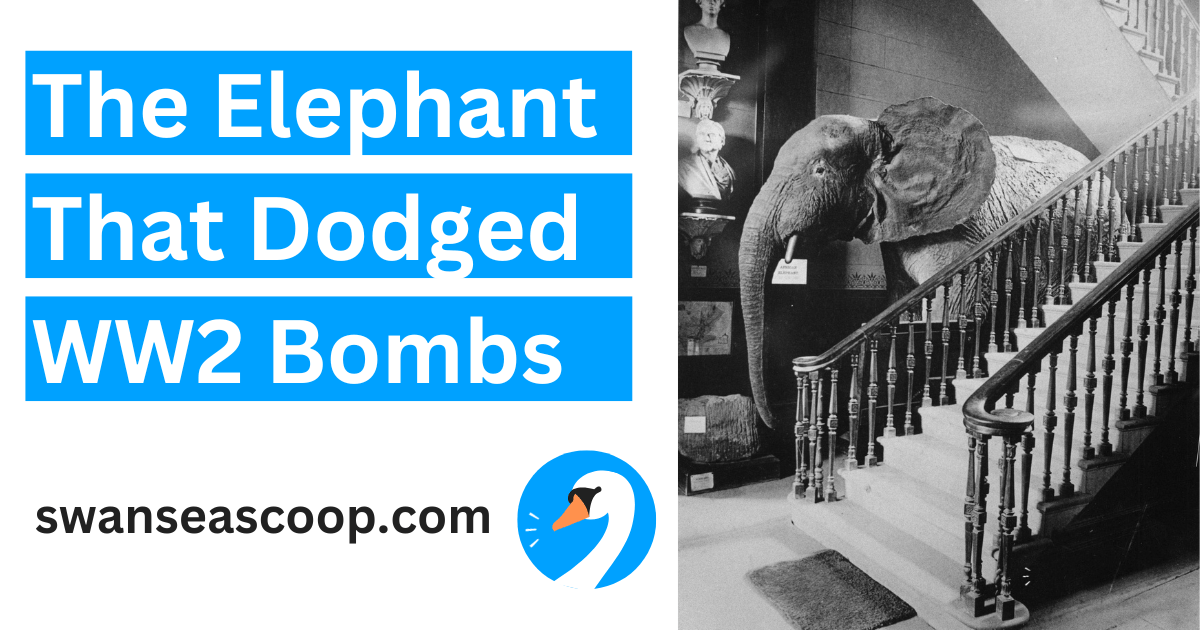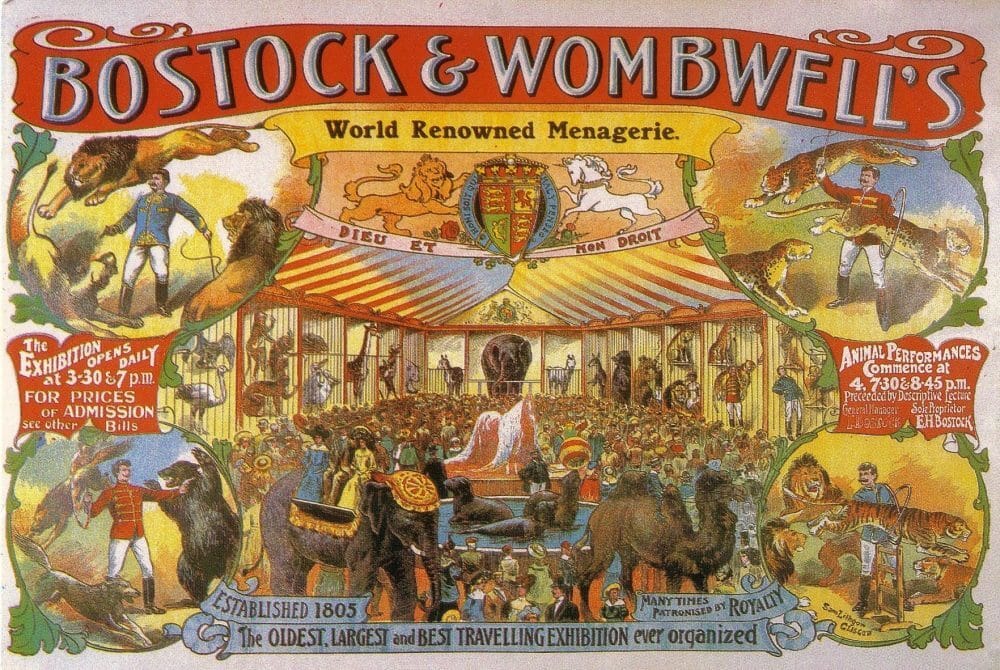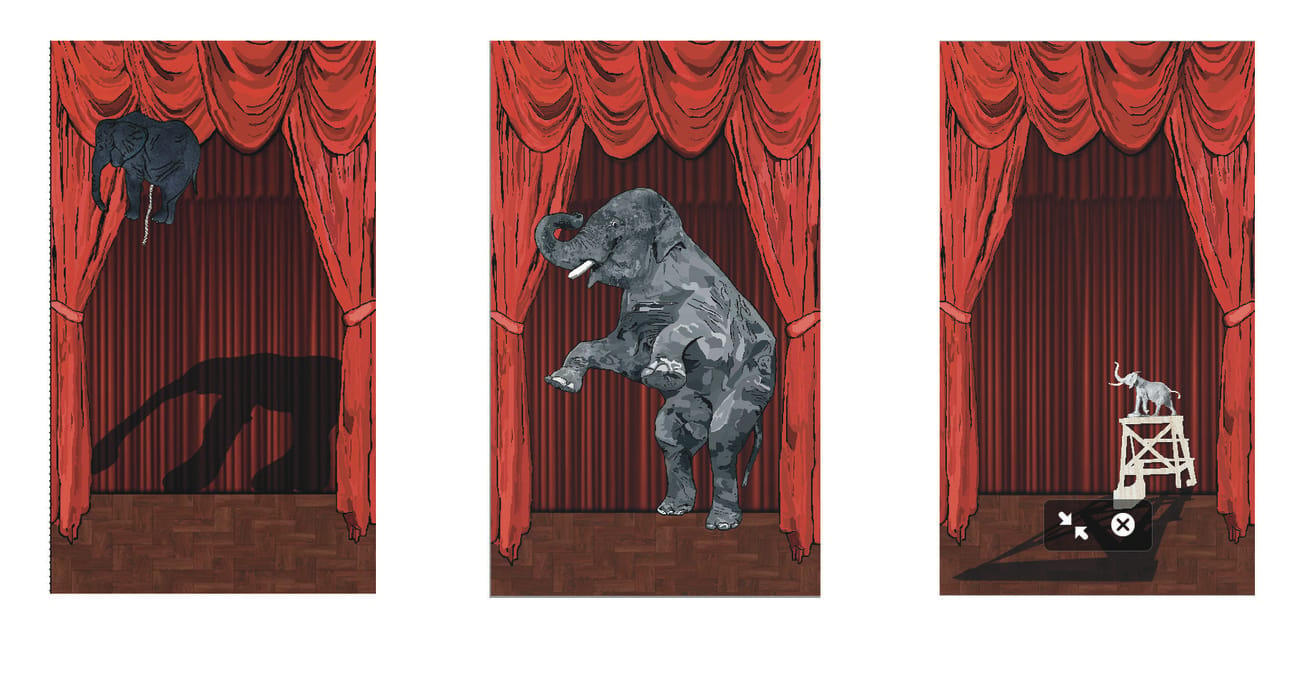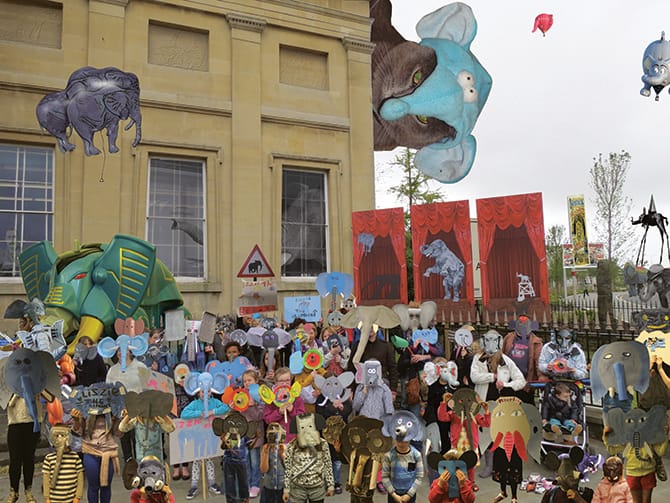
Good morning, Swansea!
This week, pop the kettle on and read the amazing tale of Lizzie - a gigantic African elephant who lived for decades in Swansea Museum and quickly became a local legend.
Catch you on Sunday!
Andrew.
An Elephant Arrives in Swansea

Image Credit: George Wombell Collection
In the summer of 1888, tragedy struck Bostock & Wombell’s Menagerie when Lizzie, a 3.5-ton African elephant, suddenly died of colic while on tour in the small Welsh village of Llansawel, near Lampeter.
“She simply lay on the ground and neither rose nor recovered,” reflected The Evening Post in an article from August 1998. “The sad event so moved villagers that they bought up all the black crepe in the local shop to wear as mourning bands.”
Devastated by the loss, Mrs. Bostock sold the elephant’s carcass to Swansea Museum and urgently telegraphed her son, Edward Bostock, instructing him to oversee the transportation. Her message was direct: “Sold carcass to Swansea Museum, load elephant back into wagon and send to Swansea as soon as possible.”
Edward rushed to Wales from Chester, leaving him with the daunting task of loading Lizzie and her massive body into a wagon only 18 inches off the ground, and trundling the 50 miles to Swansea.
Unfortunately, the wagon broke down on Alexandra Road in the centre of Swansea, forcing workers to pitch a tent over Lizzie’s body while repairs were made. The summer heat exacerbated the situation, leading to an unmistakable odour.
One report at the time humourously noted, “The tent stands—or it did on Saturday and Sunday—in Alexandra Road, as everybody with a nose can testify.” Adding to the strangeness of the situation, six shillings worth of coppers and broken bottles were discovered in Lizzie’s stomach.
Despite the hurdles, Lizzie’s body eventually reached Swansea Museum, and her transformation into a museum exhibit began.
Lizzie Gets Stuffed

Credit: Swansea Museum
Swansea Museum employed James Morris, the city’s only qualified taxidermist, and Edward Gerrard, a renowned taxidermist from the British Museum to bring Lizzie back to life. The project was ambitious: Lizzie’s skin alone weighed “fourteen hundredweight” (over 700 kilograms), and the process involved building a robust wooden frame to support her immense size.
The taxidermy work, costing £20, produced a stunningly lifelike replica that stood over nine feet tall and weighed more than a ton.
As the Swansea and Glamorgan Herald reported in 1899, “On entering the museum, the elephant now stands on the right-hand side of the entrance hall and seems startlingly realistic to anyone unprepared for the novel sight.”
The museum proudly declared Lizzie to be “the largest stuffed specimen of an elephant in Great Britain… and, with almost absolute certainty, the largest in the world.”
Lizzie’s imposing presence quickly made her a centrepiece of the museum, earning Swansea Museum the nickname “the place of the elephant.”
Lizzie And the Blitz

Swansea’s centre was flattened during WW2 | Credit: BBC / West Glamorgan Archive
Swansea Museum, like much of the city, endured significant damage during the Swansea Blitz in World War II. The first two nights of the bombing spared the museum, but on the third night, a bomb penetrated the roof of the main library, but luckily did not explode.
Elaine Kidwell, Assistant Librarian at Swansea Museum wrote to the Evening Post in 1998 to explain her experience of the night: “The great doors had been blown open... Everything seemed to be in order, but as we stood at the door and swept our torches once more across the library, we spotted the fins of a bomb sticking in the floor.”
Miraculously, Lizzie remained largely intact, though she was covered in dust and grime from the blasts. Another source says she was hit by a parts of a door as the bomb came through, and had to be stiched up.
Kidwell added how the museum’s caretaker, Mrs. Jones, made it her personal mission to keep Lizzie pristine for visiting children. Along with her daughter, Mary, cleaning the elephant was their first priority after the bombings were over.
“‘You cannot let the children see her covered in grit and grime’ were her exact words. She was a very caring lady, and very fond of Lizzie,” Kidwell wrote.
Post-war, Lizzie remained a popular fixture in Swansea museum. Before taking music exams held there, children would ritually touch her trunk for good luck.
Another time, Kidwell recalls, a man staggered in through the doors into the hall, very drunk. He took one look at Lizzie, gave a wild scream, ran back out the doors and fell down the museum steps.
Lizzie’s Last Days

Credit: Thomas Goddard / LOWCS International
By 1954, Lizzie’s time at Swansea Museum had come to an end.
As Dr. M.J. Isaac, the museum keeper, explained in a letter to the Evening Post in September 1986, “The depredation over the years by moths and children, as well as war damage, was such that in 1954 it was decided that she had deteriorated so badly that she was removed from display and destroyed.”
That a new curator found traces of arsenic on her was the final nail in the coffin for Lizzie, adds another source. A funeral pyre was said to be made for her in the garden of the museum.
Lizzie’s Legacy
After Lizzie was removed, the she occupied was converted into a cloakroom, though her presence was commemorated with a picture displayed above its door (and can still be seen today, near where she used to stand. Some of her bones were preserved in the museum store.
It seems a pity that Lizzie could not have been restored in some way, and her legacy seems to have faded over the years.

Credit: Thomas Goddard / LOWCS International
Most recently (although it was a decade ago as I write), artist Thomas Goddard produced The Life, Death, and Afterlife of Lizzie the Elephant, a project for Swansea’s Art Across the City event.
Using the tale of Lizzie as inspiration, Goddard organised elephant mask workshops and a procession through the city centre. Over 100 people donned handmade masks and banners to celebrate Lizzie’s life, parading from Swansea Railway Station to the museum where she once stood.
Would you like to see Lizzie the elephant celebrated once again in Swansea? Let me know in the comments!